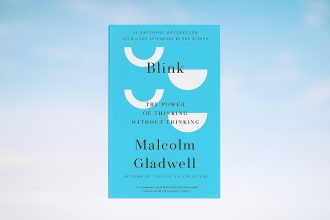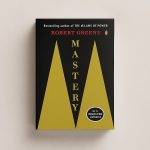In a world overloaded with financial advice, The Simple Path to Wealth by JL Collins (full title The Simple Path to Wealth: Your Road Map to Financial Independence and a Rich, Free Life) stands out for its clarity, timelessness, and unapologetic simplicity. Updated for the realities of the 2020s, this edition builds on the original’s core wisdom while addressing new investing tools, evolving economies, and life after financial independence. Collins’ voice is both reassuring and empowering, offering readers not just a path to wealth, but a roadmap to freedom and purpose. This review explores the book’s main ideas, strengths and weaknesses, and why its principles remain a guiding light for wealth builders today.
1. Introduction to The Simple Path to Wealth by JL Collins
When JL Collins first self-published The Simple Path to Wealth in 2016, it quickly became a cult classic among the financial independence, retire early (FIRE) community. Based on a series of letters he wrote to his daughter, the book distilled decades of investing wisdom into a handful of principles that were simple in concept yet powerful in execution.
Now, with the 2025 Revised & Expanded Edition, Collins returns to refine, update, and expand his teachings for a new era – one defined by economic uncertainty, rapidly evolving investment tools, and shifting life priorities. This isn’t a surface-level refresh; Collins has incorporated lessons from a decade of dialogue with millions of readers, advancements in the personal finance space, and even reflections from living the financial independence (FI) life himself.
The result? A book that feels both timeless and freshly relevant – a guide for beginners, a troubleshooting manual for intermediates, and a reminder for veterans to keep things simple and decisive.
This review will explore the revised edition’s core principles, its updates, main takeaways, pros and cons, and how you can apply its lessons in real life to achieve financial independence (FI) and live richly – not in stuff, but in freedom.
2. About the Author: JL Collins
JL Collins began his career in the corporate world, working in various industries including media, advertising, and publishing, before turning his focus toward financial education. Unlike many finance authors, Collins writes with a kind of calm detachment – a result of years spent observing how markets move and how human behavior often undermines wealth-building.
His blog, jlcollinsnh.com, started as a platform to share investing advice with his daughter, quickly became one of the most respected financial independence (FI) voices online. Known for his straight talk, humor, and a touch of contrarianism, Collins champions an investing approach centered on broad-based index funds – most notably the Vanguard Total Stock Market Index Fund (VTSAX).
Over the years, his work has been cited across major media outlets, podcasts, and financial independence (FI) forums, and he’s been a keynote speaker at numerous personal finance events, including the renowned Chautauqua gatherings. The Revised & Expanded 2025 Edition reflects not just theory, but a decade of observing how these principles play out in real lives – including his own.
3. Overview of the Revised & Expanded 2025 Edition
The 2025 update retains the beating heart of the original message:
“Spend less than you earn. Invest the surplus in low-cost index funds. Avoid debt. Live simply. Let compounding do the heavy lifting.”
However, this updated edition includes:
- Expanded chapters on international diversification to address the changing global economy.
- Updated data and charts reflecting the last decade’s market performance.
- A section on handling new financial instruments like cryptocurrency, target-date funds, and robo-advisors – and why Collins still prefers the simplicity of index funds.
- Life after financial independence (FI) – deeper reflections on purpose, fulfillment, and avoiding the “What now?” trap once money is no longer a concern.
- Strategies for different life stages, from early-career professionals to retirees facing Required Minimum Distributions (RMDs).
The tone remains conversational, but the scope now better addresses the unique challenges – and temptations – faced by investors in the 2020s.
4. Main Ideas & Concepts
- The Simplicity Advantage
The Simple Path to Wealth by JL Collins argues that most financial advice overcomplicates investing. Complexity doesn’t just confuse – it often costs more in fees and taxes. His prescription is unchanged:
– Avoid individual stock picking.
– Use broad market index funds (especially the U.S. total stock market).
– Ignore market noise and stick to your plan.
- F-You Money
One of the most famous ideas from the book, “F‑You Money” represents the level of savings that allows you to walk away from any situation – job, contract, relationship – without fear. This isn’t about riches for their own sake but about freedom from coercion.
- Debt as a Wealth Killer
Collins dedicates more space in the 2025 edition to address student loans, credit card debt, and the post-pandemic rise of buy-now-pay-later schemes. His position is firm: Eliminate high-interest debt before focusing on investing.
- The Market Always Goes Up… Eventually
The book tackles market declines head-on with historical data showing that patience is rewarded. Collins’ key tool here is building emotional resilience so that bear markets become opportunities rather than triggers for panic selling.
- International Diversification
Previously downplayed, the revised edition includes a discussion on holding a small international stock allocation. While Collins still champions the U.S. market for its global reach, he acknowledges the peace of mind this diversification can bring some investors.
- Life After financial independence (FI)
A notable new section emphasizes that financial independence is just the beginning. Without purpose, travel and free time can quickly grow stale. Collins advises conscious design of your post-financial independence life to keep it rich in meaning as well as money.
5. Key Lessons Learned
From The Simple Path to Wealth by JL Collins several timeless and timely lessons emerge:
– Automate investing to remove the temptation of market timing.
– Minimize fees and taxes – two of the biggest drags on compounding.
– View market dips as discounts, not disasters.
– Align spending with values, not with trends or peer pressure.
– Plan for transitions – achieving financial independence is a milestone, not a finish line.
6. Strengths (Pros) and Criticisms (Cons)
Strengths (Pros)
- Clarity and Accessibility
Collins writes for real people, not finance insiders. His storytelling blends humor with pointed truths, making it accessible for beginners without being condescending to seasoned investors.
- Evidence-Based Advice
The book backs up claims with decades of market data and clear reasoning, avoiding fad-chasing entirely.
- Universal Principles
These ideas work across geographies, careers, and income brackets – though execution speed will differ.
- Updated Real-World Relevance
Adding cryptocurrency, modern retirement products, and post-pandemic debt realities makes the revised edition more relatable to current readers.
Criticisms (Cons)
- U.S.-Centric Perspective
Even with added notes on international diversification, much of the tax and market advice is tailored to U.S. investors.
- Overconfidence in Simplicity
Some readers may wish for deeper exploration of nuanced strategies (e.g., alternative asset classes) that Collins deliberately avoids.
- Requires Discipline
The principles are easy to understand but demand years of consistency, which is harder than it sounds.
7. Impact & Relevance Today
The financial independence, retire early (FIRE) movement has exploded since the first edition – with both positive and negative publicity. Critics often accuse FIRE adherents of unrealistic privilege, while devotees see it as a beacon of deliberate living.
Collins’ message cuts through noise, providing a minimalist approach that resonates both with high-earners in tech and middle-income families who simply want freedom from debt and the paycheck-to-paycheck cycle.
In an era of TikTok investing tips, meme stocks, and 24-hour financial news hysteria, The Simple Path to Wealth remains a grounding force, reminding us that wealth isn’t about having everything – it’s about needing less and choosing wisely.
8. Applying the Book’s Lessons in Real Life
- Early Career:
– Live below your means from day one.
– Avoid lifestyle inflation and prioritize debt repayment.
- Mid-Career:
– Max out tax-advantaged accounts (401(k), IRA).
– Switch to low-cost index fund investing if you haven’t already.
- Nearing Retirement:
– Shift gradually to safer allocations (bonds, cash reserves).
– Begin thinking about withdrawal strategies and tax planning.
- Post-financial independence (FI):
– Keep expenses in check.
– Find fulfilling projects, hobbies, and social connections.
9. Verdict & Recommendation
The 2025 Revised & Expanded Edition of The Simple Path to Wealth keeps the integrity of the original while updating it for modern realities. It’s perhaps the single best one-stop resource for understanding how to accumulate wealth without surrendering your life to financial anxiety or complexity.
Whether you’re just starting your financial journey or refining it after decades, Collins’ voice will remind you why clarity, discipline, and patience still matter most.
10. Conclusion
The Simple Path to Wealth by JL Collins is both a compass and a map for financial independence. Packed with humor, humility, and hard data, its message is refreshingly simple in a time when financial chatter has never been more chaotic.
By focusing on what truly works – low costs, broad diversification, and emotional resilience – Collins empowers readers to sidestep complexity and focus on building both wealth and a life worth living.
If freedom, not just dollars, is your measure of wealth, this book deserves a permanent spot on your shelf – and in your daily habits.
If you found this review helpful, please share it or leave a comment below.













